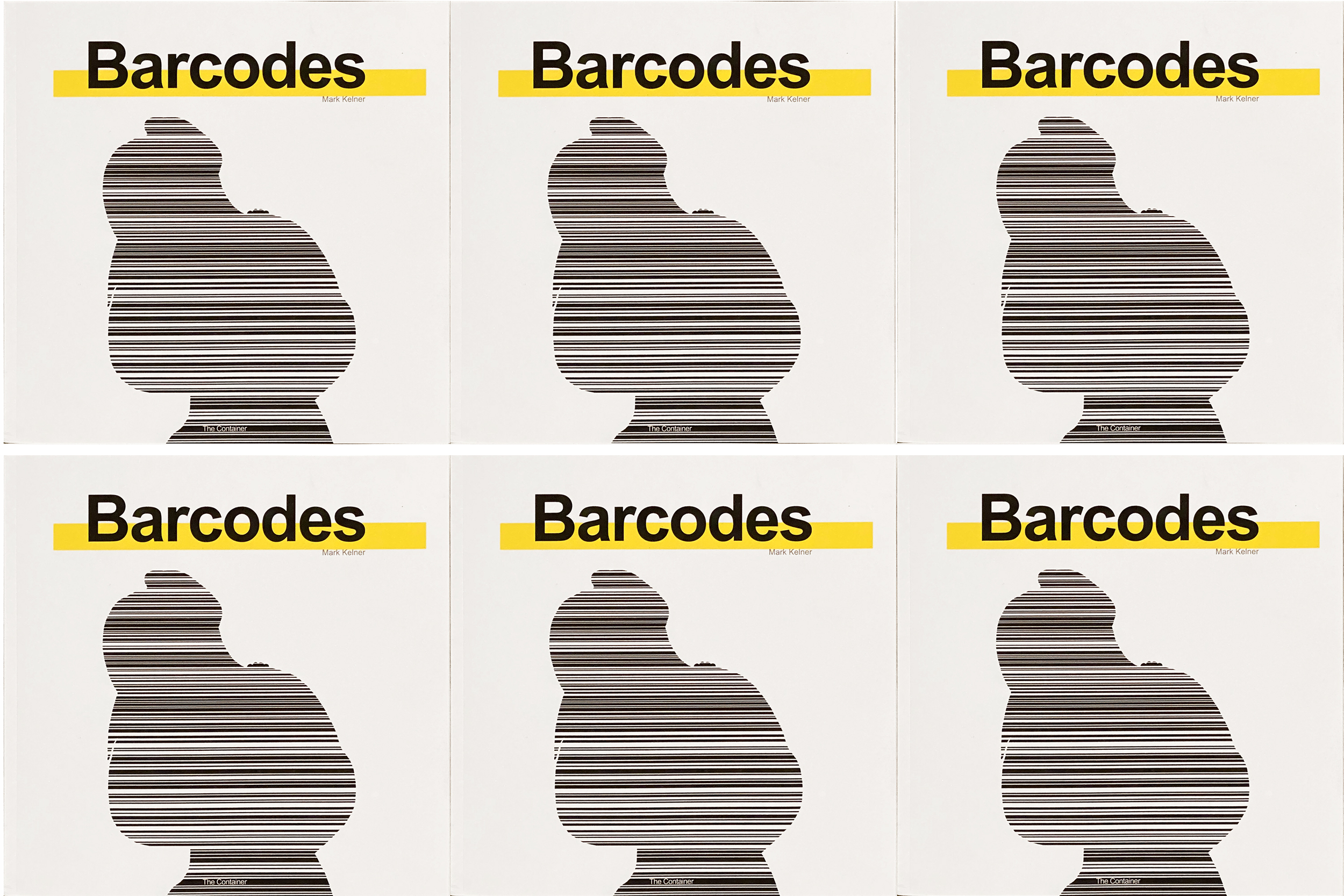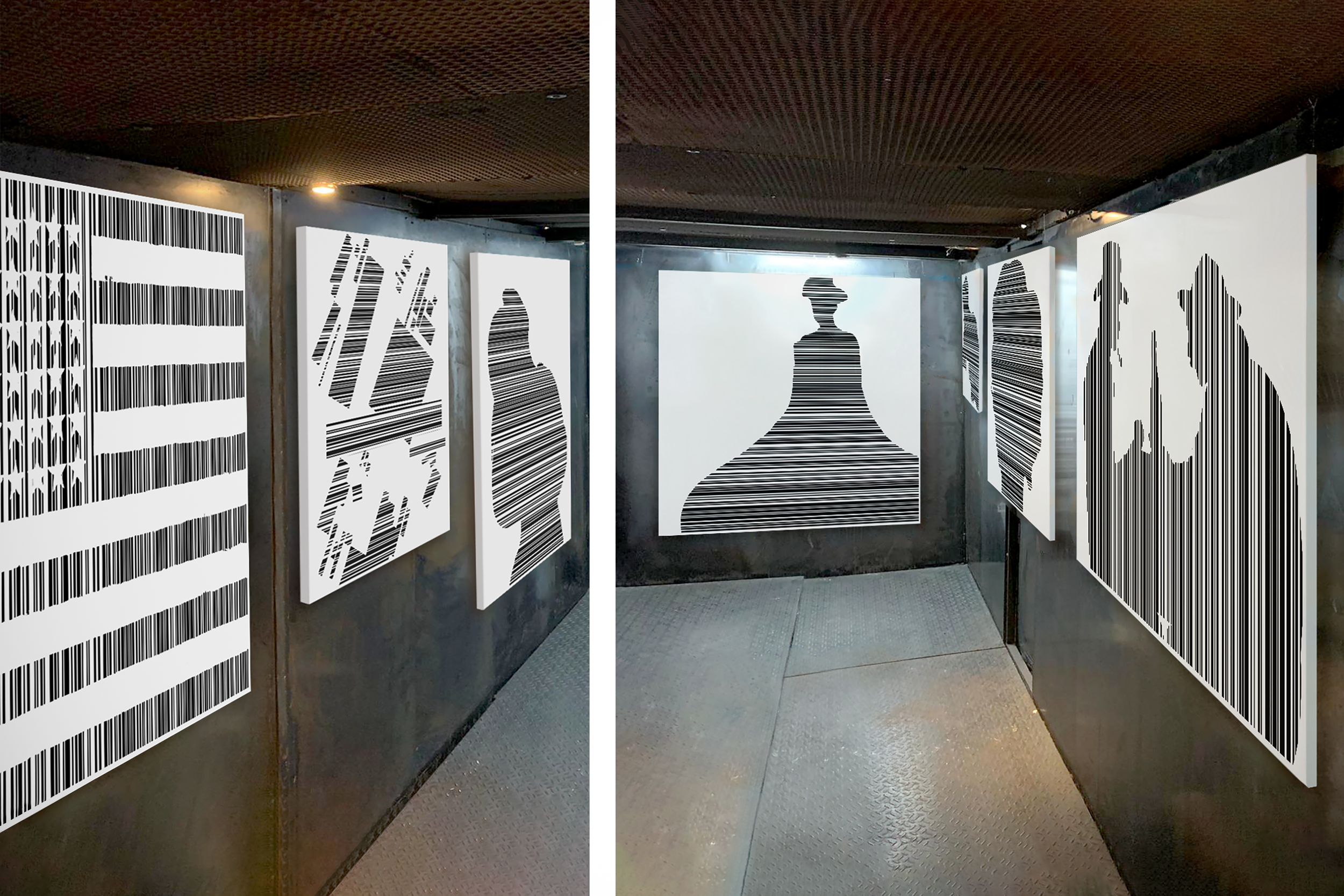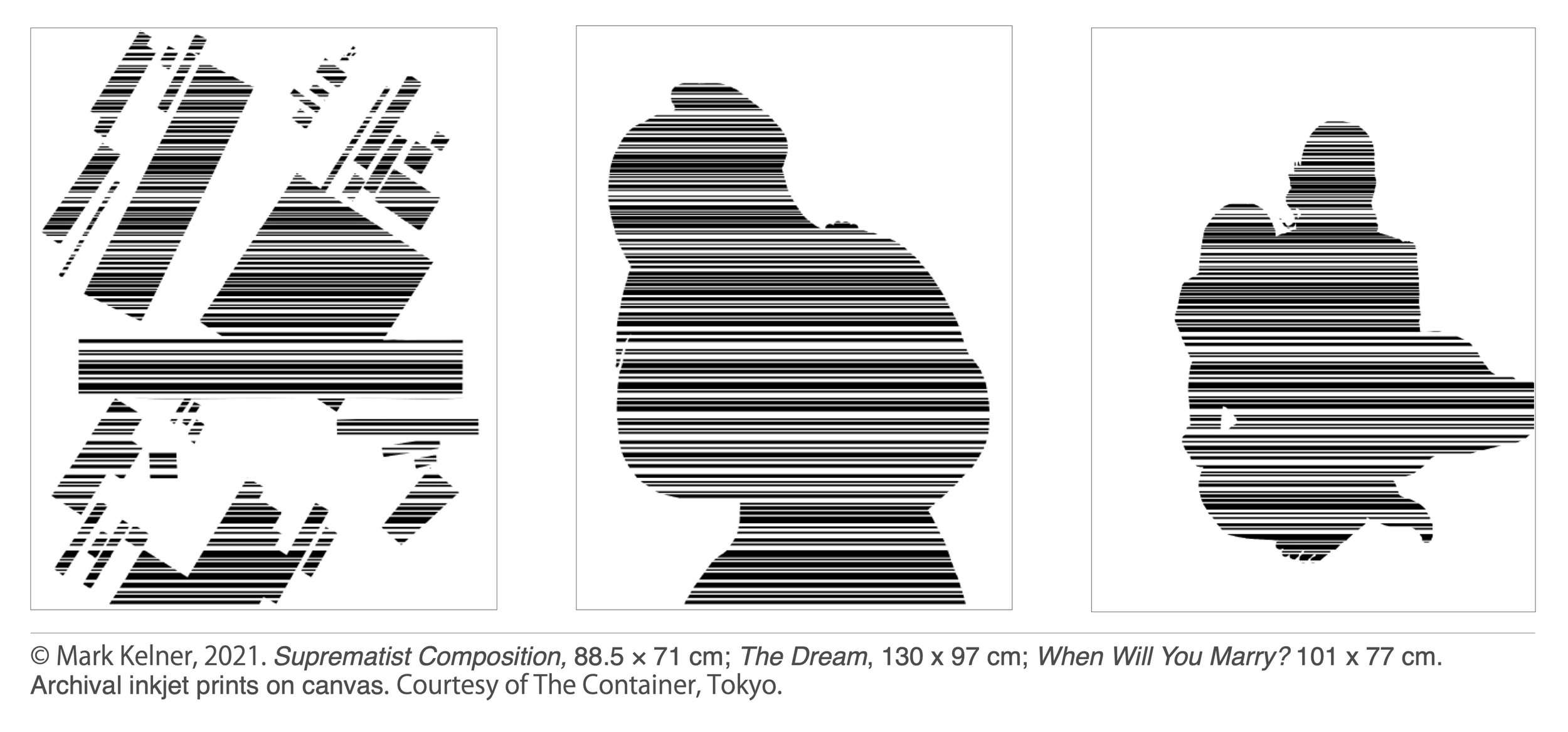 Image 1 of 3
Image 1 of 3

 Image 2 of 3
Image 2 of 3

 Image 3 of 3
Image 3 of 3




Mark Kelner: Barcodes, Exhibition Catalog, 2021
Published in tandem with the opening of Barcodes at The Container, Tokyo, this 77 page catalog of the same title, features an essay by gallerist Shai Ohayon and notes by the artist, Mark Kelner. Documenting both the exhibit and his practice, this tome is in both English and Japanese and showcases over 40 images. Barcodes was exhibited from April 12 through June 28, 2021. An excerpt from Barcodes is below:
In November 2017, our religion of consumerism solidified itself as the major ideological force behind art when a circa 15th century Leonardo da Vinci painting of questionable provenance sold at auction for $450,312,500. Measuring 25 7/8 x 18 inches, it became the most expensive painting in history at an approximate valuation of $1,000,694.44 per square inch. As major art events like this have become little more than celebrations of capitalism, this illustrates how money singularly shapes our understanding of art history and the inherent value of art itself. And perhaps most importantly, it becomes the focus of how “Art” is represented in mass culture and its media—art as commodity.
Barcodes expresses what is art in this moment: full of themes of false representation and false idolatry intersected with the figurative gestures of the world’s highest priced paintings. For example, in “Marilyn” (2021), I remade Andy Warhol’s most iconic portrait, “Turquoise Marilyn” (1964), which sold in 2007 for $80,000,000, as an illustration of our collective understanding of art today. The ubiquity of the subject and expression of barcodes as a symbol of commerce reveals both the familiar and alien qualities we recognize as an uneasy marriage and paradox between art, money, fame, and power. Satire and kitsch blur the line in representing what we love about these paintings: their endless consumption and repetition in our lives.
Today, an artwork garners attention because of its publicized auction price or a number related to a private sale, rather than the piece itself, its subject matter, or its creator. If we acknowledge that, then for most people, art becomes just another thing to be coveted, bought, held, and later sold. The nuance, the mysteries, the soul of a painted figure, a landscape, the scene, the feeling or experience of the piece, or an event in the life of an artist remain seemingly unimportant. Thus, Barcodes incongruously hits home this emblematic idea of how art is objectified, commodified, who owns it and why, and, above all, our relationship with these images and their inevitable appropriation and distortion.
Published in tandem with the opening of Barcodes at The Container, Tokyo, this 77 page catalog of the same title, features an essay by gallerist Shai Ohayon and notes by the artist, Mark Kelner. Documenting both the exhibit and his practice, this tome is in both English and Japanese and showcases over 40 images. Barcodes was exhibited from April 12 through June 28, 2021. An excerpt from Barcodes is below:
In November 2017, our religion of consumerism solidified itself as the major ideological force behind art when a circa 15th century Leonardo da Vinci painting of questionable provenance sold at auction for $450,312,500. Measuring 25 7/8 x 18 inches, it became the most expensive painting in history at an approximate valuation of $1,000,694.44 per square inch. As major art events like this have become little more than celebrations of capitalism, this illustrates how money singularly shapes our understanding of art history and the inherent value of art itself. And perhaps most importantly, it becomes the focus of how “Art” is represented in mass culture and its media—art as commodity.
Barcodes expresses what is art in this moment: full of themes of false representation and false idolatry intersected with the figurative gestures of the world’s highest priced paintings. For example, in “Marilyn” (2021), I remade Andy Warhol’s most iconic portrait, “Turquoise Marilyn” (1964), which sold in 2007 for $80,000,000, as an illustration of our collective understanding of art today. The ubiquity of the subject and expression of barcodes as a symbol of commerce reveals both the familiar and alien qualities we recognize as an uneasy marriage and paradox between art, money, fame, and power. Satire and kitsch blur the line in representing what we love about these paintings: their endless consumption and repetition in our lives.
Today, an artwork garners attention because of its publicized auction price or a number related to a private sale, rather than the piece itself, its subject matter, or its creator. If we acknowledge that, then for most people, art becomes just another thing to be coveted, bought, held, and later sold. The nuance, the mysteries, the soul of a painted figure, a landscape, the scene, the feeling or experience of the piece, or an event in the life of an artist remain seemingly unimportant. Thus, Barcodes incongruously hits home this emblematic idea of how art is objectified, commodified, who owns it and why, and, above all, our relationship with these images and their inevitable appropriation and distortion.
Published in tandem with the opening of Barcodes at The Container, Tokyo, this 77 page catalog of the same title, features an essay by gallerist Shai Ohayon and notes by the artist, Mark Kelner. Documenting both the exhibit and his practice, this tome is in both English and Japanese and showcases over 40 images. Barcodes was exhibited from April 12 through June 28, 2021. An excerpt from Barcodes is below:
In November 2017, our religion of consumerism solidified itself as the major ideological force behind art when a circa 15th century Leonardo da Vinci painting of questionable provenance sold at auction for $450,312,500. Measuring 25 7/8 x 18 inches, it became the most expensive painting in history at an approximate valuation of $1,000,694.44 per square inch. As major art events like this have become little more than celebrations of capitalism, this illustrates how money singularly shapes our understanding of art history and the inherent value of art itself. And perhaps most importantly, it becomes the focus of how “Art” is represented in mass culture and its media—art as commodity.
Barcodes expresses what is art in this moment: full of themes of false representation and false idolatry intersected with the figurative gestures of the world’s highest priced paintings. For example, in “Marilyn” (2021), I remade Andy Warhol’s most iconic portrait, “Turquoise Marilyn” (1964), which sold in 2007 for $80,000,000, as an illustration of our collective understanding of art today. The ubiquity of the subject and expression of barcodes as a symbol of commerce reveals both the familiar and alien qualities we recognize as an uneasy marriage and paradox between art, money, fame, and power. Satire and kitsch blur the line in representing what we love about these paintings: their endless consumption and repetition in our lives.
Today, an artwork garners attention because of its publicized auction price or a number related to a private sale, rather than the piece itself, its subject matter, or its creator. If we acknowledge that, then for most people, art becomes just another thing to be coveted, bought, held, and later sold. The nuance, the mysteries, the soul of a painted figure, a landscape, the scene, the feeling or experience of the piece, or an event in the life of an artist remain seemingly unimportant. Thus, Barcodes incongruously hits home this emblematic idea of how art is objectified, commodified, who owns it and why, and, above all, our relationship with these images and their inevitable appropriation and distortion.
